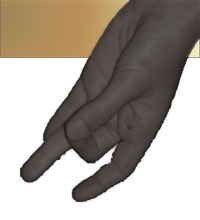What is brainwave entrainment? Well, first we need to define entrainment.
Entrainment is the process whereby two interacting oscillating systems, which have different periods when they function independently, assume the same period. The two oscillators may fall into synchrony, but other phase relationships are also possible.
That is a bit technical, but think of a holding a tuning fork that is tuned to the frequency of a G note. Strike the tuning fork and place it near a guitar and you will notice that the G string on the guitar starts to vibrate! It has entrained on the tuning forks frequency.
How does this have anything to do with the brain?
It actually has a lot to do with your brain when you realize that your brain is pulsing with electrical impulses. This electrical activity can be measured with a piece of equipment called an electroencephalogram (EEG), which measures the frequency of the electrical current.
This frequency or speed of the brainwaves is measured in Hertz (Hz).
Now here is the really cool part – the predominant frequency that your brain is resonating with at any particular moment can be associated with your state of mind. This means that your state of mind, for example relaxed, frightened, or sleepy can be “seen” in your brainwave frequencies at that moment.
These frequencies and associated states have been studied for a long time and have been categorized into 4 broad categories.
- Beta Waves – 13Hz to 20Hz. Beta waves are associated with normal waking consciousness. They are present when you are focused on activities in the outside world. However, too much beta can make one feel stressed out.
- Alpha Waves – 8Hz to 12Hz. Alpha waves are likened to a light meditation. They are prevalent when you daydream. They will become stronger when your eyes are closed. An excellent state to be in to program your mind.
- Theta Waves – 4Hz to 7Hz. Theta waves occur during heightened states of creativity and are found with a deep meditative state. Seek theta to access unconscious material, or to reveal insights and creative ideas.
- Delta Waves – .5Hz to 3Hz. Delta waves are found in a deep sleep state or unconsciousness. Also, delta waves are common in very deep meditation. To stay conscious during delta takes practice.
So in a nutshell, brainwave entrainment is simply getting your brainwaves to resonate with an outside frequency so that your predominate brainwaves are one of the above frequencies.
This can be done in using audio or even visual stimulation. Audio is the most common because it is not expensive and it WORKS!
A great starter audio that will entrain your brain is call Into The Void.
